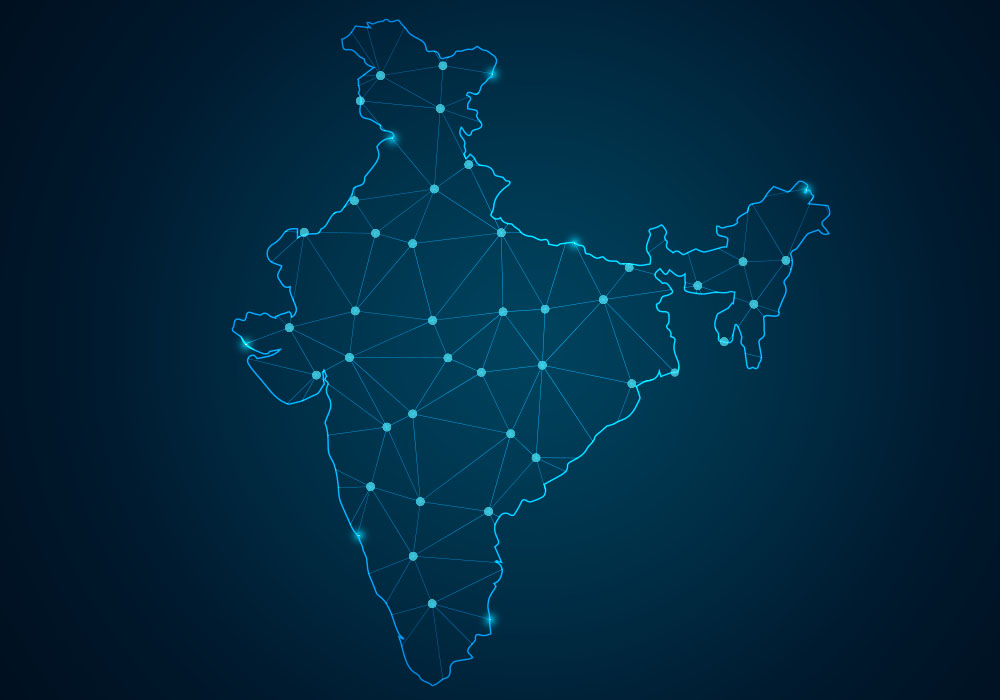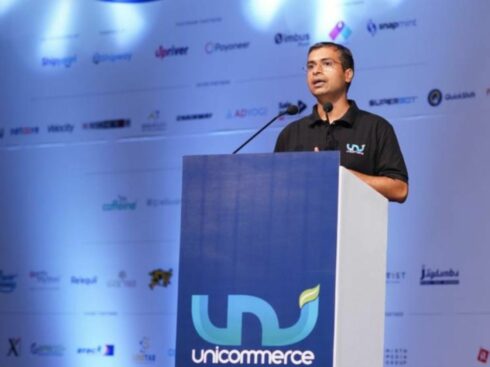SUMMARY
A $50 Bn Market Awaits Indian SaaS Products And Businesses
Consider the following statistics:
- A report published by Google and Accel Partners in March last year stated that a $50 Bn market awaits Indian SaaS products and companies. India could end up garnering 8% of the global SaaS SMB market which is expected to grow to $132 Bn by 2020.
- As per this report, India is now home to more than roughly 500 SaaS startups.
- Over $850 Mn+ was invested since 2010 in Indian SaaS products (companies), as per Tracxn.
Yet in spite of these promising figures, it’s a well-known fact that on an average, for an Indian SaaS products company, over 80% of its customers are from regions including the US, EU, Middle East and others while 20% are from the domestic market (India).
Inc42 has been talking to SaaS startups over the past couple of months and the majority of them agree that though India is a growing market for building SaaS products, their next million in ARR (Annual Recurring Revenue) won’t be generated by just selling in the Indian market.
Why is that India despite being such a prolific producer of SaaS products, is NOT the first choice for most SaaS companies when it comes to selling their products?
There have been quite a few reasons that have been pointed out to us on why India is not a good product for selling SaaS products. Besides the one main reason for slow growth in revenues. Some of these include:
- Majority of the Indian SMEs unlike their western counterparts are the first time users of SaaS applications. This mindset is a big factor.
- Most of them shy away from spending annually on Capex/Opex costs.
- Customers want a lot of customisation from one single vendor.
- Due to a tailored sales culture, it takes a prolonged process to close sales to corporates. In contrast, the lifecycle of closing a deal is shorter in other countries in comparison to India.
- Enterprise SaaS still rules the Indian market, which is a limiting factor as compared to the West.
- Indians are not used to DIY products.
- Delayed payments from the customers.
- Recurring payments – still not hassle-free.
- Customer acquisition costs are high.
- A smaller Indian market.
While this list could go on further, we wondered if it is right to conclude that India is not a good market for selling SaaS products? Or is there a silver lining to the SaaS cloud in India? While some SaaS players in India believe there might be, yet mostly agree that there needs to be an attitude shift before India can transition to a favourable market using SaaS products.
Best Place To Build, But Not To Sell SaaS Products
“India is the best place to build a SaaS product but not the ideal market to sell,” says Arvind Parthiban, co-founder of web optimisation platform Zarget, which has 80% of its clients outside India and was recently acquired by Freshworks.

He explains, “We Indians expect a lot of handholding when we purchase a software. The support expectations are too high because of how we are culturally tuned. The markets outside India are a lot different with the ‘Do it yourself’ (DIY) attitude associated with purchasing and using a SaaS product. The lifecycle of closing a deal, from sales to support, is a lot less in other countries. So, as a business, for the same effort and time invested, you make more. The demand of the Indian customers is such that SaaS (Software as a Service) has become Service as a Software here!”
No wonder, Zarget’s first and biggest customer Buscape is a Brazilian company. That having said, Arvind believes that Indian SaaS customers’ attitude is changing now.
“In 2005, when we were working for Zoho, we specifically ignored India. People were using pirated products or downloading them. At that time, India was not a market to be taken seriously. Today, India is one of the top emerging markets even as a consumer of SaaS.”
India: Not A DIY Market
Avlesh Singh, co-founder of onsite customer engagement suite Webengage also reiterates the fact about the ‘DIY’ attitude associated with purchasing and using a SaaS product.
“Indians, by nature, are not DIY. That makes adoption of SaaS products very hard,” he says.

Interestingly, like Zarget, Webengage’s first paying customer was also an outsider, a completely random guy from UK, who still remains a customer of the company. The startup has more than 30K+ businesses associated with it, with over 60% of its revenues coming from geographies outside India.
Avlesh further attributes this to India being a small market overall.
“Traditional businesses are still warming up to the concept of paying a recurring fee compared to one-time software fee with an AMC (Annual Maintenance Contract) of sorts. Lastly, regulations around payment make it incredibly hard for companies to enable frictionless recurring payments,” he opines on India’s lesser appeal as a market for SaaS startups.
Then there are others who believe that in India, it is still the enterprise market that rules the roost. Raj Sheth, co-founder of SaaS based recruiting startup Recruiterbox says, “All my Indian customers are other technology companies or other SaaS companies. In India, the market is a little limited. Like, I can’t go to a real estate company in India with my product unless the sales model is very different. In India, only the enterprise market exits. This medium market does not exist.”
 He adds that in enterprises, they are using the biggest softwares and the sales culture is very tailored. So, a sales representatives goes to the office physically, there are demos and negotiation cycles. This process doesn’t sit well with low touch product startups like Recruiterbox. Thus engaging with enterprises only makes sense if one is selling an expensive software otherwise the customer acquisition costs metric would go for a toss.
He adds that in enterprises, they are using the biggest softwares and the sales culture is very tailored. So, a sales representatives goes to the office physically, there are demos and negotiation cycles. This process doesn’t sit well with low touch product startups like Recruiterbox. Thus engaging with enterprises only makes sense if one is selling an expensive software otherwise the customer acquisition costs metric would go for a toss.
That’s why for many startups like Recruiterbox, an enterprise skewed Indian market doesn’t make much of a sense.
India: A Relationship Driven Market
Umair Mohammed who runs Wigzo technologies, a SaaS company into personalization from Delhi says “India is a great market to battle test your product because volumes are high and demands for features from customers is pretty rapid. The customers always want you to build something, that might not be relevant to them. Neither they are ready to pay that much for the features they want personalised.”
 However he added that to sell in India is a massive task. One needs to build solid relationships with companies, to even begin selling in India.
However he added that to sell in India is a massive task. One needs to build solid relationships with companies, to even begin selling in India.
He further adds, “Customers usually ask for 40-50% discount. Which always become a problem, and you can’t restrict functionality, because that does not go down well.”
He also points out that the biggest drivers for SaaS have been demand from SMBs, which is yet to develop in a way like in the US, Europe or other developed markets. Indian SaaS companies are yet to see same traction from Indian SMBs like that in US.
Even Enterprise Customers Are A Nightmare To Deal With
It’s not SaaS startups alone which feel that the DIY aspect of SaaS doesn’t sit well with the Indian customer attitude. Karthik Reddy, Managing Partner at Blume Ventures says, “SaaS is designed for a high labour cost, highly efficient DIY market. India has none of those characteristics as yet. India is remarkably a DIForMe (Do It For Me) market on most fronts.”
He further adds that “If one adds cost of sales (not easy to sell over phones and online demos), cost of servicing (because of the DIForMe nature), the CAC becomes untenable at times. Building distribution channels for products that are priced less than $100-200 a month or with above characteristics less than $1000 a month, is not trivial.”

Then there are other bottlenecks, he reveals. Customers who negotiate tough and delay payments; no ease of payment, tedious approval processes or faking such approval cycles – all means that leave alone SaaS, even Enterprise customers are a nightmare to deal with.
Additionally, he reveals, “Customers think software products much like machinery need to be priced at cost plus or a ridiculously high ROI – even when breakevens are within three to six months, customers complain on price. This is truer of enterprise SaaS though. SMB SaaS has extremely high churn due to inactivity, perceived lack of value, or just death of the SMB/Startup. So, suddenly, the cost of sales even if efficient seems a tall order to breakeven on.”
Though revenues and burn can yet be contained to build meaningful cash flow positive businesses as per Karthik but scale is then an issue. He explains, “Investors are wary of pace and eventual size if the startup does not have not an international customer base as the scale built in India is never seemingly enough to excite them. So, we prompt portfolio to head out of the country ASAP rather than build an unpredictable base of Indian customers. We have examples of Nowfloats, Exotel, Greytip etc who have done wonders of building such strong local SaaS businesses but we also have lots of companies that gave up on India and moved away quickly such as Threadsol, Tookitaki, Squad etc.”
The Counter Argument: SaaS Business Model Makes Much More Sense For Investment Averse Indians
On the flip side however, there are investors like Shripati Acharya, Managing Partner at Prime Venture Partners who are solidly sold on India being an attractive market story.
“There are two important things in a SaaS business. One is lifetime value (LTV) of the customer and the other is the CAC. This ratio of LTV/CAC is an important metric to evaluate the health of the SaaS startup (though SaaS is awash in metrics.) LTV depends on how much the customer is going to spend vis a vis the product and LTV of a customer in India and that of a customer outside India will obviously be different and significantly higher. That is obvious of GDP differences, so obviously if you are spending the same amount to acquire a customer in US and India, your LTV for the US customer is going to be much higher. That’s why overseas markets look attractive to Indian companies. But that is different from saying that India is not an attractive SaaS market,” he opines.

But then the Indian market is evolving and if SaaS startups solve Indian specific problems, they would be able to generate sizeable revenues. He cites instances of companies from Prime’s portfolio leveraging their growth in the Indian market to expand overseas such as HackerEarth.
Shripati further adds, “What further makes SaaS as a business model much more attractive to India is that Indians are averse to making upfront investments in technology. They would like to see an ROI sooner. So if anything, a SaaS business model would make perfect sense for an Indian company.”
Of course he admits that in the US, customers are much more used to paying for a nascent technology. Indian companies might need more references. So of course the culture in the US is much friendlier to technology startups. Indian enterprises are more of technology followers. Also in Indian accounts, collections have been a problem. He believes that once Indian markets become more mature, a friendlier culture would ensue on its own. He further adds that the SaaS model of monthly payments is much more suited to startups as they can cut services easily for that month given all SaaS services are cloud-based.
For Shripati, as more and more Indian companies go online, it will be easier for SaaS companies to acquire them. “So as long as the search starts online, and a SaaS startup does not have to spend on establishing partner/dealer networks, SaaS and cloud delivery is very well suited for a big country like India where customers are all over the place and connectivity is getting better by the day,” he concludes. Add advanced payment options and ripple effects of demonetisation to this and India will become a favourable SaaS market.
While there is no denying Shripati’s views on India’s rapidly expanding SaaS market, there are still stumbling blocks on its way to becoming an attractive and friendly as the more developed parts of the world. Added to that is the fact that Indian SaaS companies are making on their way to higher ARRs. Freshworks is looking to cross $100 Mn in revenue in the near future. Zoho is already purported to be above $300 Mn in revenues. The expectation is that the next 12 months four or five of Indian homegrown SaaS companies will achieve $50 Mn-$100 Mn in sales, which, in turn, will set the ball rolling for others.
As per technology research firm Gartner, global IT spending in 2017 is expected to rise 2.7% to $3.5 Tn. Of this, spending on enterprisetech is projected to be $351 Bn, up 5.5% from 2016, and increase to $376 Bn next year. No wonder the ripple effects of this will be felt in the Indian market too, home to more than 500 SaaS startups. As more and more Indian SaaS companies taste success, those benefits will trickle down to the Indian market, aided by rapid digitisation which is underway in the country. Maybe that day is not very far when Indians will not only make DIY SaaS products for the world but also do it for themselves!
As more and more Indian SaaS companies taste success, those benefits will trickle down to the market, aided by rapid digitisation which is underway in the country. Maybe that day is not very far when Indians will not only make DIY SaaS products for the world but also do it for themselves!



























